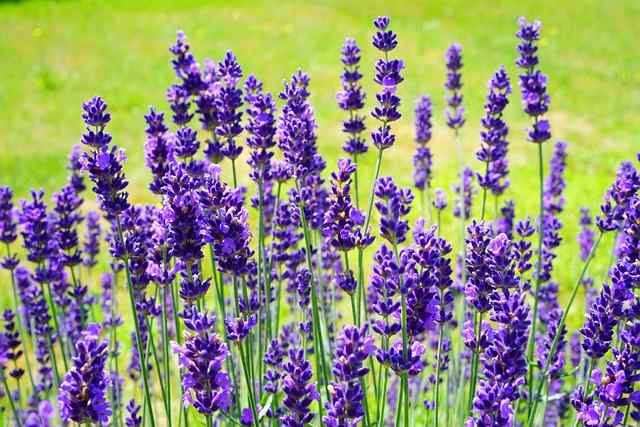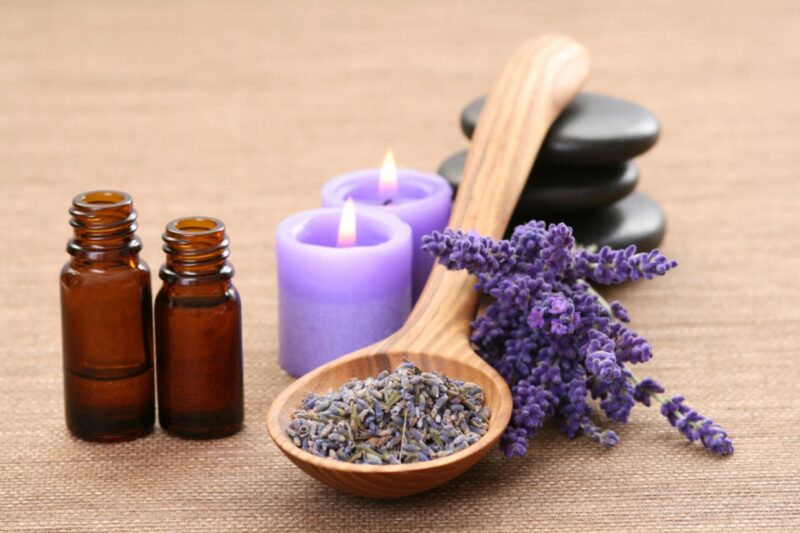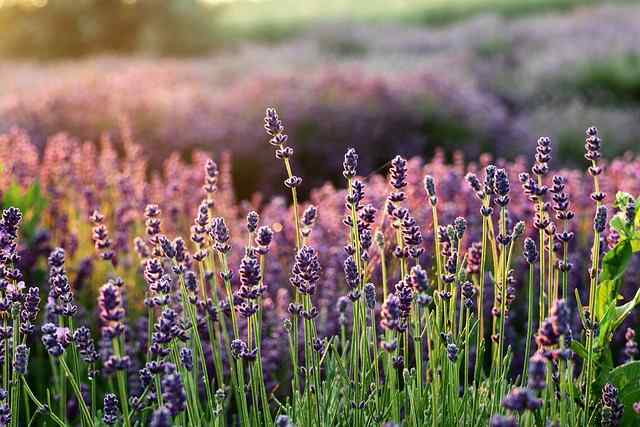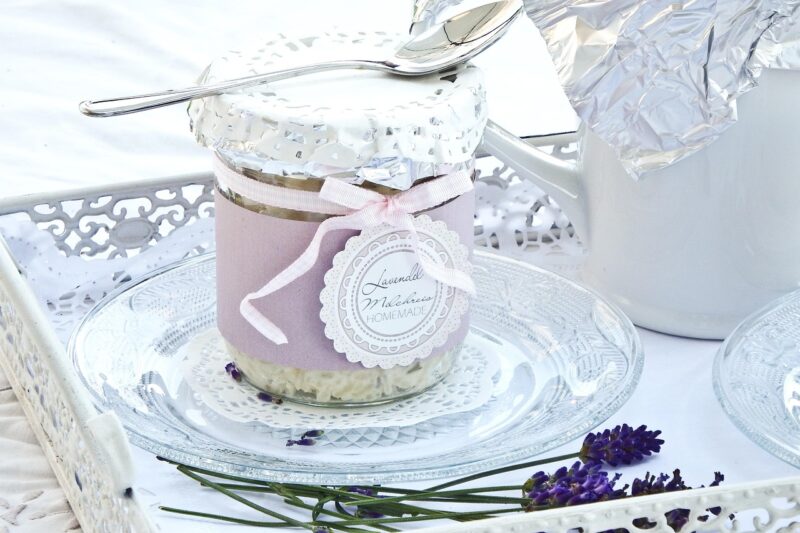In this guide, we will explore the world of lavender, examining its edible nature, uses in cooking, health benefits, and considerations for cultivation.
The Edibility of Lavender: A Clear Green Light

Yes, lavender flowers are indeed edible! The flowers, leaves, and even stems of the plant can be consumed, although they are most commonly used in their flowering form. While lavender’s taste profile may be strong and unique, it can be a delightful addition to various dishes when used properly.
When incorporating lavender into culinary creations, it’s essential to choose the right variety. The most recommended for culinary use is English lavender, known for its sweeter and milder flavor compared to other species like Spanish lavender (Lavandula stoechas), which can have a more camphorous taste.
Distinguishing Between the Types of Lavender
There are a few key varieties of lavender used for cooking:
English Lavender (Lavandula angustifolia): Known for its delicately sweet flavor and aroma, this is the most popular variety for culinary uses and is often utilized in baking, infusions, and beverages.
French Lavender (Lavandula dentata): Has a more pungent flavor, which can sometimes dominate dishes. It is used less frequently in cooking but is appealing for infusions and herbal mixtures.
Spanish Lavender (Lavandula stoechas): Famous for its unique appearance and strong aroma, this variety is more suitable for ornamental purposes rather than culinary applications due to its intense flavor.
Safety and Precautions
While lavender is generally safe for consumption, there are a few precautions to keep in mind. Always ensure you use culinary-grade lavender, ideally grown organically. Lavender from commercial sources might be treated with pesticides or chemicals unsuitable for ingestion. If possible, grow your own lavender or obtain it from reputable suppliers.
It is also a good idea to consult with a healthcare professional, particularly if one has allergies to other plants in the mint family, as reaction could occur. Moderation is key when trying lavender for the first time; its robust flavor can be overwhelming if used excessively.
Culinary Uses of Lavender
The culinary versatility of lavender is remarkable, with applications that span both savory and sweet dishes. Below is an exploration of the many ways lavender can be used in cooking.
Lavender in Baking
One of the most popular uses of lavender is in baking. Cookbooks and blogs devoted to cooking with herbs often feature recipes that incorporate lavender, often in cookies, cakes, and breads.
Lavender Shortbread Cookies: A classic use of lavender in baking, these buttery confections have a delicate floral note that enhances the cookie’s sweetness. Finely crushed lavender buds are combined with butter, flour, and sugar to create a delightful treat that pairs well with tea.
Lavender Honey Cake: The fragrant flavors of lavender and honey blend beautifully in a moist cake, providing a balancing sweetness. This cake can be topped with a lavender-infused glaze or served with whipped cream for an elegant dessert.
Lavender-Infused Muffins: Adding lavender to muffin batter can create a soft flavor profile that surprises and delights. Pairing the lavender with complementary ingredients like lemon or blueberries takes the muffins to another level.
Flavoring Beverages
Lavender’s aromatic qualities make it an excellent addition to beverages. Both alcoholic and non-alcoholic drinks can benefit from a hint of lavender.
Lavender Tea: This soothing herbal tea can be made by steeping dried lavender flowers in hot water. Adding a touch of honey or lemon can enhance its flavor, providing a calming drink perfect for winding down.
Lavender Lemonade: Mixing lavender syrup with lemonade creates a refreshing drink perfect for summer gatherings. The floral notes complement the bright acidity of the lemon, resulting in a beautifully colored beverage.
Lavender Cocktails: Bartenders have embraced lavender in various cocktails, such as lavender martinis or lavender-infused gin and tonics. Infusing spirits with lavender creates unique flavor profiles that intrigue the palate.
Savory Dishes
Beyond sweets, lavender can add depth to savory dishes. It pairs well with herbs, meats, vegetables, and even cheeses.
Lavender Herb Rub: Combining lavender with a variety of herbs such as rosemary, thyme, and sage can create a tantalizing rub for meats. This mixture works beautifully on roasted chicken or grilled lamb, infusing a subtle floral flavor that enhances the meat’s richness.
Lavender-Infused Oils: Infusing oil with lavender can enhance salad dressings or drizzling over grilled vegetables. The oil captures the essence of lavender, providing a delicate flavor that brightens up any dish.
Creamy Lavender Risotto: Adding lavender to a creamy risotto can elevate the dish to unexpected heights. When paired with ingredients like lemon zest or peas, it creates a beautifully balanced meal.
Lavender in Desserts
In addition to cakes and cookies, lavender finds a delightful role in various dessert recipes.
Lavender Ice Cream: Making lavender-infused ice cream offers a refreshing treat during warm months. The infusion process allows the flavors to meld beautifully, resulting in a creamy dessert that is both fragrant and satisfying.
Lavender Panna Cotta: This classic Italian dessert can be enhanced with the addition of lavender. The infusion gives the panna cotta a lovely aroma, while the floral notes support the creamy texture.
Chocolate Lavender Truffles: The combination of rich chocolate and floral lavender creates an exquisite dessert. These truffles can provide an elegant finish to a dinner party or special occasion.
Health Benefits of Lavender

Lavender is not just a culinary marvel; it also boasts various health benefits that may enhance overall wellbeing. People often utilize lavender in herbal medicine, and consuming lavender can provide some of these advantages.
Stress Relief and Relaxation
One of the most prominent merits of lavender is its association with relaxation. The scent of lavender is well known to reduce anxiety and stress levels. Consuming lavender in teas or desserts can create calming effects that promote tranquility, making it an excellent choice for those seeking relaxation.
Digestive Aid
Lavender has been used traditionally as a remedy for digestive issues, including bloating and indigestion. The herb can help soothe the stomach and improve overall digestive function. Adding lavender to meals or enjoying it in tea can contribute to better digestive health.
Antioxidant Properties
Lavender is rich in antioxidants, which can combat oxidative stress in the body. Incorporating lavender into your diet can help stave off free radicals and protect the cells from damage, promoting overall health.
Anti-inflammatory Qualities
Research has indicated that lavender may exhibit anti-inflammatory properties. Lavender-infused oils or teas may act as soothing agents for certain inflammatory conditions, adding another layer of potential health benefits.
Growing Your Own Lavender

If you find yourself enchanted by the notion of cooking with lavender, why not consider growing your own? Cultivating lavender can be a rewarding experience, and having fresh lavender available for culinary usage brings additional delight to the kitchen.
Ideal Growing Conditions
Lavender thrives in well-drained soil and requires full sunlight for most of the day. Hot, dry climates are preferred, and it is essential to avoid overwatering, as lavender is susceptible to root rot.
Planting and Maintenance
Plant lavender in the spring or fall to ensure optimal growth. Pruning is essential for maintaining the plant’s shape and health. After the flowering season, trim back the plant to promote future growth and ensure a vibrant display in the years to come.
Harvesting Lavender
To harvest lavender, cut the flowers just before they fully bloom, as this is when flavor and fragrance are at their peak. Bundle the stems and hang them in a cool, dark place to dry. Once dried, you can store the flowers in an airtight container for use throughout the year.
Conclusion
In conclusion, lavender is not only a beautiful and fragrant addition to gardens but also a delicious and versatile herb in the kitchen. From baked goods to savory dishes and beverages, the culinary possibilities are endless. Additionally, its health benefits make it a worthwhile addition to your diet.






